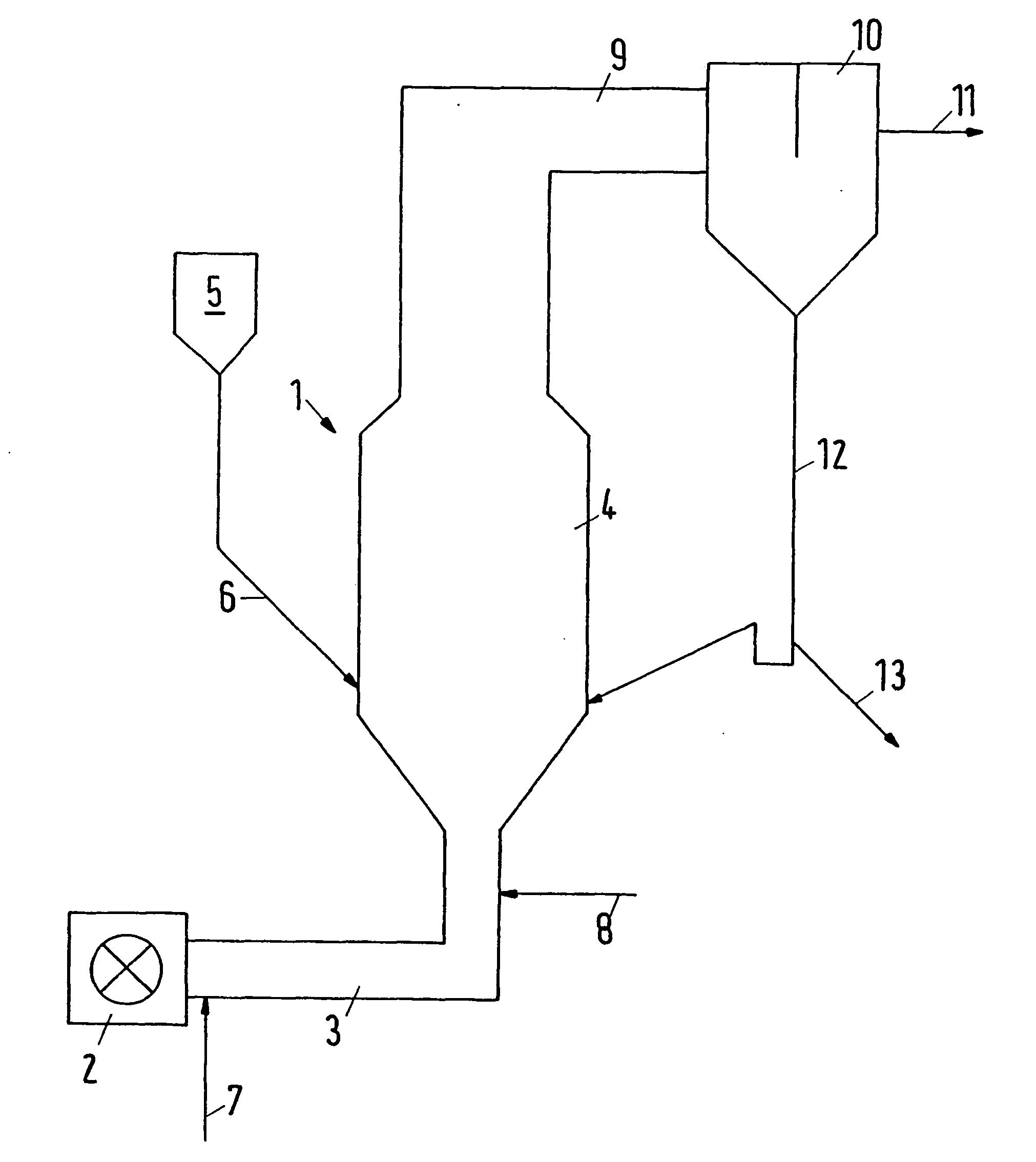Method and plant for the thermal treatment of granular solids
a technology of thermal treatment and granular solids, applied in the direction of microwave heating, electrical equipment, chemical/physical/physical-chemical processes, etc., can solve the problems of partially absorbing microwave radiation and dust or other solids on the window
- Summary
- Abstract
- Description
- Claims
- Application Information
AI Technical Summary
Benefits of technology
Problems solved by technology
Method used
Image
Examples
example
[0036] The following Table indicates typical method parameters for a calcination of magnesite. For comparison, the data are indicated with and without the irradiation of microwaves in accordance with the invention. The frequency of the irradiated microwaves is 2.45 GHz. The entire fluidizing air is supplied via conduit 7. In this example, further process gas is not admixed through conduit 8.
Feed MagnesiteMicrowave-UnitsConventionallysupportedType of reactorFlash reactorFlash reactor + microwavesMode of operationcontinuouslycontinuouslyFlow ratekg / h252245Grain size100%Fluidizing air, furnaceNm3 / h300300inletTemperature° C.750720Energy inputFuel oill / h28.526.5MicrowavekW06Product qualityAnnealing loss%2.30.4
[0037] The product quality can be improved substantially by the proposed method.
PUM
| Property | Measurement | Unit |
|---|---|---|
| Temperature | aaaaa | aaaaa |
| Temperature | aaaaa | aaaaa |
| Length | aaaaa | aaaaa |
Abstract
Description
Claims
Application Information
 Login to View More
Login to View More - R&D
- Intellectual Property
- Life Sciences
- Materials
- Tech Scout
- Unparalleled Data Quality
- Higher Quality Content
- 60% Fewer Hallucinations
Browse by: Latest US Patents, China's latest patents, Technical Efficacy Thesaurus, Application Domain, Technology Topic, Popular Technical Reports.
© 2025 PatSnap. All rights reserved.Legal|Privacy policy|Modern Slavery Act Transparency Statement|Sitemap|About US| Contact US: help@patsnap.com



